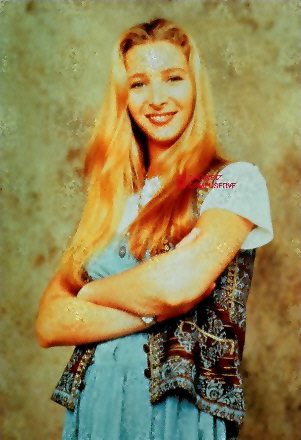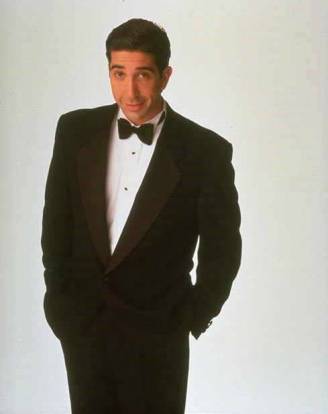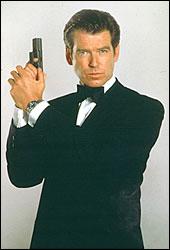
| SOSC
4318: Modes of Communication: "Reading Television?" Friends |

| Frasier |
| Friends.1 |
| Friends.2 |
| Simpsons |
| Sopranos |
| That 70's Show |

...layered which then instigated a mass of women rushing to salons to get their very own "Rachel Cut". Of course this reinforces the idea that the actors on Friends set examples for their audience. In this case people are very much aware of the status Friends holds as a trendsetter and many viewers made the conscious decision to replicate Rachel’s hair in an obvious attempt to look like her.

The "Rachel Cut"
In addition, the appearance of each character is suited to their personalities which are often quite stereotypical. Some aspects work to communicate an illusion of depth to a character. For example, Phoebe wears a lot of jewelry and colourful clothing which signifies her off-beat and quirky nature, and reinforces her stereotype as the "free spirit". In contrast, a character like Ross who is considered to be the intellectual (and by extension it would follow, the geek) wears plainer clothes, like checkered shirts to signify that he is more serious. These are obvious signs that Hermann would claim are used "because they do not need much explanation, and the viewer’s expectation[s]...are predictable..." (2).

Phoebe-Wear
Codes within appearance also further societal expectations surrounding gender roles. Using clothing as an example, in one episode both Chandler and Ross have purchased tuxedos formerly worn by famous stars (Pierce Brosnan aka James Bond, and Val Kilmer aka Batman). Not only do these suits suggest obvious aspects of masculinity, they also carry with them all of the connotations that surround the actors and their respective characters. That is, the image of the hero and womanizer combined. By wearing these tuxedos both Ross and Chandler express a desire to appropriate those aspects that are admired in these famous heroes through association. Of course it is not surprising that both Chandler and Ross bicker over whose suit is better, and by extension, who is the bigger man. This is symptomatic of the competition that many men have between each other to prove their worth as men and therefore signifies a rigid conception of what masculinity is and should be. Audiences would definitely read all of the signs in this case since the implications are so obvious. Yet, they may not take interpretation a step higher and deduce the restricting roles Friends is advocating for men.


From this to this? I don't think so!
Back to Friends 2 Semiotics Page
By: Lisa Alfano


| Home | Assignment Purpose | Theory Summaries | Who We Are |
